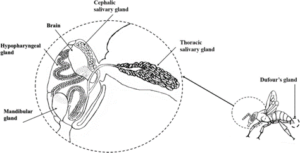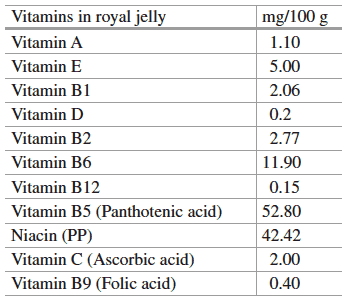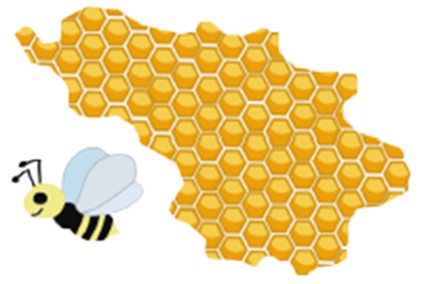A highly nutritious glandular secretion of young bees, used to feed the queen and young brood. It is secreted from the hypopharynx gland of nurse bees, Royal jelly, also called Bee Milk, thick, white, nutritious substance fed to bee larvae. Secreted from glands in the heads of worker bees, it is fed to worker and drone larvae until the third day of life and to queen bee larvae throughout the larval period. Its components include water, proteins, carbohydrates, and various trace elements (mineral salts) and vitamins. It is rich in pantothenic acid, a vitamin substance aiding metabolism of fats and carbohydrates and also contains vitamin B6, or pyridoxine, important in metabolism of amino acids. (Britannica)
Royal jelly, a substance secreted by the hypopharyngeal glands of worker honey bees, stimulates the growth and development of queen honey bees. It is highly perishable and one of the most difficult of all foods to harvest, commanding astronomical prices because of its scarcity and high demand, fueled by belief in its healing properties. What royal jelly can do for humans is controversial, but it purportedly reinvigorates the body and extends the life span. Pantothenic acid, a major ingredient, is useful in treating some bone and joint disorders. Rheumatoid arthritis symptoms may subside with the injection of this acid. When pantothenic acid is combined with royal jelly, even better results are reported. This product is sold by many health food companies. (Commercialization of Insects and Their Products
Gail E. Kampmeier, Michael E. Irwin, in Encyclopedia of Insects (Second Edition), 2009)


- Save
Vitamin content of Royal Jelly
Also See: Royal Jelly: The three essential facts
« Back to Glossary Index